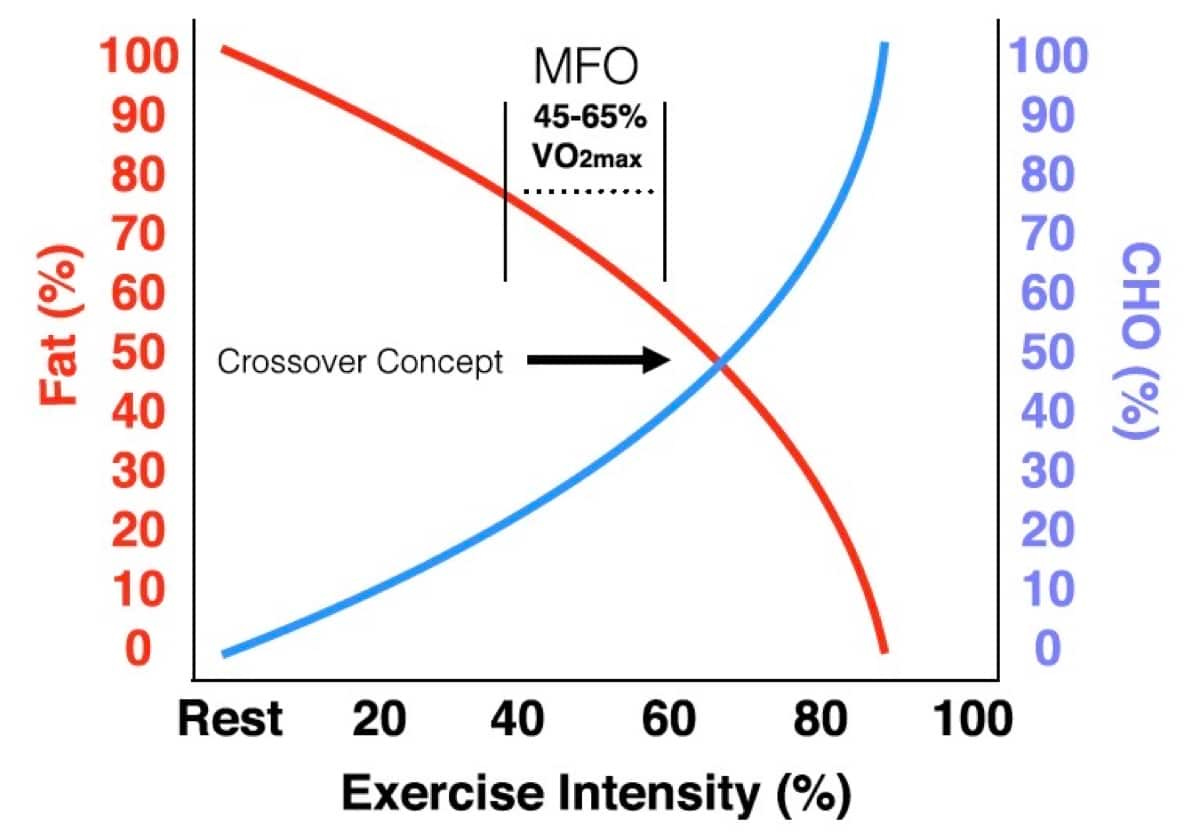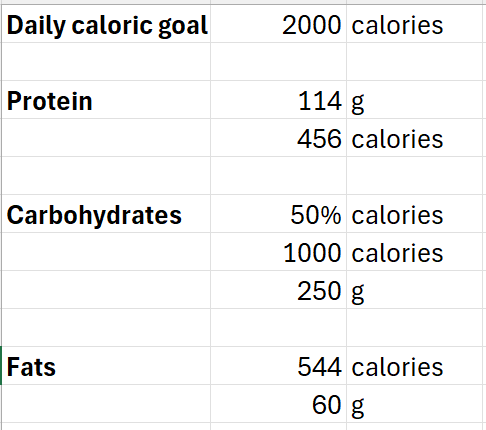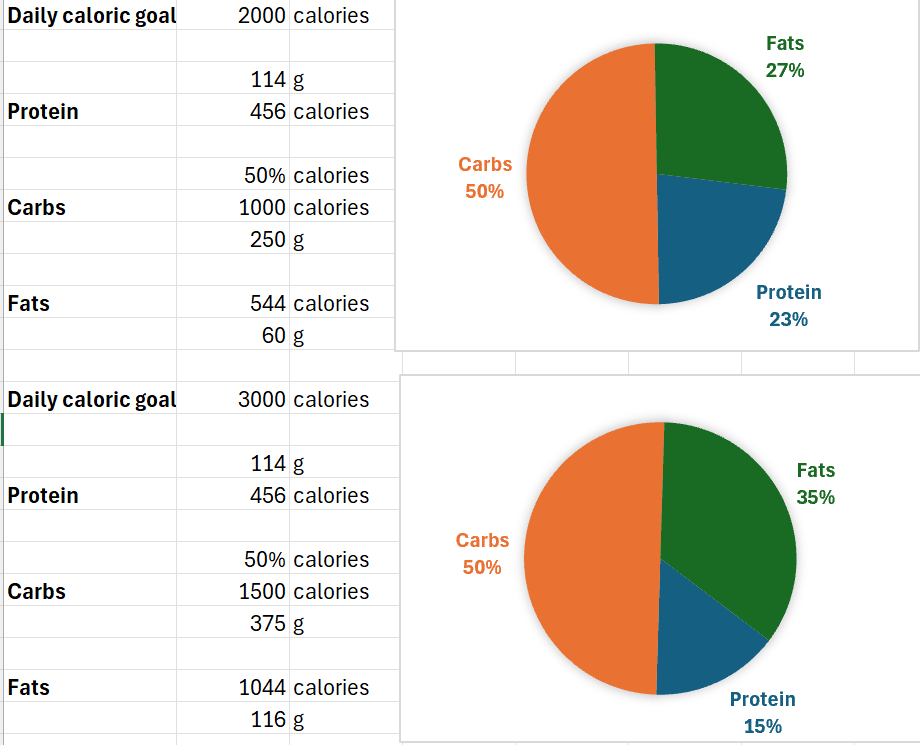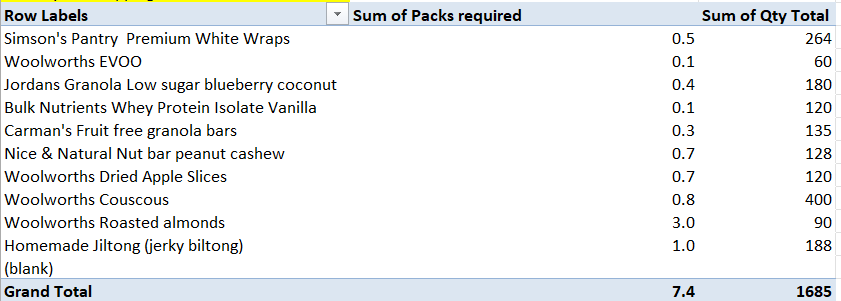welcome back to dehydration stations— my series on experimental hiking meals (a little detour from my usual baking adventures in penny’s kitchen!).
not interested in this series? you can unsubscribe from just dehydration stations by following the steps here. and don’t worry! the baking updates continue as normal on penny’s kitchen
in the last post we went through how to build up your total energy requirements. now we turn ourselves to the question of what those calories should actually consist of
there are a few factors to consider here: there’s the macronutrient composition (being the balance of fat, carbs (including fibre), and protein), the micronutrients (essential vitamins and minerals), the weight of your foodbag, how you plan to cook it, how you like to eat (sit-down meals vs grazing), how much time you’d like to put into food preparation before the hike, how much you want to spend, where you’re shopping, just to name a few!
we’ll start with the essential macronutrient composition of your food. there are three major classes of macronutrients: protein, fat, and carbohydrates
we break our target daily caloric goal down into a target balance of these macronutrients, starting with protein
protein
it seems like protein is everywhere these days, and for good reason! protein is essential for muscle repair, recovery, and satiety. this becomes particularly important on longer hikes when trying to maintain your lean body mass (aka muscle)
when eating in a caloric deficit (common on longer hikes), your body will turn to your muscles to provide the energy required. dietary protein intake will help ‘preserve’ the muscle we work so hard to build in the gym and reduce injury risk
the australian government recommends a minimum of 0.75g / kg bodyweight (note: for a female my age, your number may vary), while the american college of sports medicine recommend 1.2-2 g / kg bodyweight for endurance athletes (which includes hikers!). i like to lean on the higher end of this range and will target 1.8-2g / kg bodyweight daily for a target of 103 - 114g.
protein has an energy density of 4 cal/g, so i will target 412 - 456 calories, or about 20% of my daily calories.
note i keep my protein target fixed, irrespective of the daily caloric need. that is, if i was doing a longer, harder day with a higher caloric requirement i would still target that 114g of protein, but it would take up a proportionally smaller percentage of my intake.
so protein is sorted - let’s look to fats and carbohydrates
fat-carbohydrate balance
carbohydrates have the same caloric density at protein - 4 cal/g but fat is more than double this at 9 cal/g. this matters when trying to minimise the weight of your food supplies, because the same calories in fats will weigh less than half than that weight in pure carbohydrates.
we showed in part one that the food weight doesn’t make a big difference to total daily burn, but in my experience it makes a huge difference in comfort level and pack size. one kilogram can be the difference between a comfortable weight you can carry all day, and a weight that has you uncomfortable, risking ankle injury on uneven ground, or just having no fun
so why not carry 20% protein and the rest in fat, to keep your pack as light as possible?
carbohydrates are the body’s preferred fuel source. they’re a readily available, fast-burning source of energy. fats are also used for fuel, but they better for longer, sustained energy. think of kindling (carbs) vs coals (fat).
let’s touch on the crossover concept.

at low intensities, your body utilises mainly fats for fuel. as exercise intensity ramps up, your body switches to using more carbohydrates for fuel. we’re always burning some blend of carbohydrates and fats, but this proportion will vary when walking on the flat, up steep inclines, or scrambling up rock falls. note the crossover point can be shifted further to the right (using more fat at higher intensities) by prolonged endurance training, but that could be subject of an entire other post!
looking at the crossover concept, it seems logical that we should fuel with mainly fats when hiking at low intensity however without sufficient carbohydrate intake, hikers will struggle at higher intensity - such as on inclines, at altitude, or in the cold. you’ll also likely experience brain fog, slower recovery, and ‘bonking’ or hitting the wall. this is a familiar sensation to anyone who’s ever trained for a half- or full marathon.
we really need a suitable balance of fats and carbs for real-world hiking:
fats for a ‘base’ load for all-day energy
carbohydrates for mental clarity and energy for climbs
i have played around with this balance across a few hikes and have found that i do best on a 50% carbohydrate target when hiking. going too low on the carbs left me cranky, my legs feeling empty every morning, and an upset digestion.
on the flipside, a higher carb lower fat intake had my blood sugar jumping up and down and led to energy crashes. this balance gives the right trade-off of energy and pack weight.
in this example, 50% of my calories coming from carbohydrates would be 1,000 calories or 250g of carbs per day.
the rest of the day’s calories will be made up with fat
we can subtract the protein calories (456) and carbohydrate calories (1000) from our daily goal to get 544 calories, or 60g of fat as the remainder
as a sanity check, this is just above the minimum recommended 1g/kg bodyweight of fat intake.
adding it up
bringing it all together, we use the following guidelines:
protein: 2g / kg bodyweight
carbohydrates: 50% caloric intake
fats: remainder
here’s how this would play out for two days - our previous example of 2,000 calories and a bigger hiking day with a 3,000 calorie requirement
we can see the protein target is steady, and the carbohydrate and fat targets flex to hit the increased needs of the bigger hike
so we now know the specific macronutrient targets we’re aiming to hit each day of the hike
what to eat?
but we don’t go to the shops to buy a pack of protein, a box of carbs and a jar of fats - we buy food. most foods are comprised of a mix of protein, fats, and carbs in varying proportions.
this is where my insane spreadsheet comes in - it’s a database compiled over many, many trips with detailed information about common foods available in supermarkets, hiking shops, and online

i’ll go in, select the foods i’d like to eat, and add them up to check how close i am to my targets
this is a sample day, and you can see we are pretty close to the target protein, carb and fat goals we calculated before
this selection is totally personal preference and depends on the trip you are planning. some factors to consider:
are you planning on cooking, or assembling meals?
do you like to stop for sit-down lunches, or snack all day?
what’s your budget?
do you prefer to shop entirely at the grocery store, or will you buy dehydrated meals? or make them yourself?
do you have any dietary requirements?
for this trip, the weather forecast was warm and sunny and i wanted to go without my stove so all the food choices reflect this: cereal, wraps, and cold couscous
i’m also a big grazer and this meal plan reflects this - i like to eat the majority of my food before 2pm, then have a recovery shake at camp and a smaller dinner. i’m also lactose intolerant so you’ll see i’ve chosen to use protein powder in lieu of milk powder with my cereal
multi-day planning
but what about when we’re hiking over multiple days? and we might start in the afternoon, and finish before lunch on the final day?
we can tally up the quantity of each meal required pretty easily
this can then be multiplied out by each meal to calculate the total quantity of each item required (or the total packets required for items like wraps that come in a pack of 8)
finally, a handy pivot table can bring it all together to make your shopping list for the trip - it’s that easy!
optimisation options
eagle eyes will notice i also note the total weight, fibre, and cost in the daily meal plan.
in the case of this plan i think the fibre is a little low so i would go back in and swap out some choices for higher fibre options. the RDA for fibre for women is 25g/day. too little or too much fibre will lead to digestive discomfort after a few days, which no one enjoys!
i also care about the total weight of my meal plan, which we noted is a delicate balance between lightweight fats and heavier carbs. i like to target 4-5 cal/g for a meal plan to keep it in ‘ultralight’ territory so this plan is a little easy. i would also go back in and swap some items for denser items - maybe swapping the dried apple (only 2.64 cal/g) for macadamia nuts (7 cal/g) and accept the slightly lower carbohydrate intake. i might also swap the apple for a sports powder like gatorade powder, skratch powder or similar (about 3.5 cal/g), depending on how intense the hike looks to be (remember from before: more intense == more carbs burnt)
it’s not just the weight of the food - it’s also the weight of the packaging! whatever goes into the wilderness must come out, and that includes tins, cardboard wrappers, ziploc bags, wet teabags and all.
keeping an eye on the cost and food waste is also important to me. the shopping list above calls for a lot of half-packets of items which increases the upfront cost of provisioning this hike and could lead to food waste. i would go back into this meal plan and fiddle with my selections to try and use whole packets of muesli bars, wraps, etc. if budget is a consideration for you, the cost of one-off items like dehydrated meals, individual clif bars, protein bars, sports drinks etc can really add up over a multi-day hike.
wrapping up: hike smarter, eat happier
by understanding the macronutrient breakdown that works best for your body, your terrain, and your hiking style, you’re well on your way to building a food plan that’s not only lightweight and energy-efficient, but also delicious, satisfying, and sustainable.
in the next instalment, I’ll dive into some of my favourite meals and snack combinations — real foods I’ve tested on trail that hit the macros, are easy to prep, and don’t taste like backpack cardboard. whether you’re assembling meals from the supermarket or building your own DIY dehydrated menu, i’ll show you options for every style and budget.
happy hiking, and see you next time!






